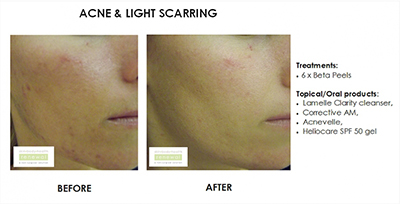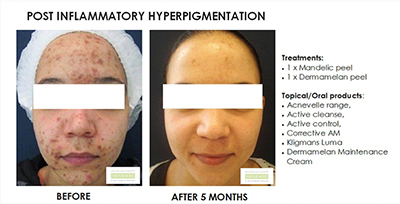
To crack this myth, we first need to look at our skin's layers and to understand how the three skin layers work together.
The Skin
The deepest layer, or the hypodermis, is where our fat cells are situated which provide our skin with volume, shape and that desirable youthful look. Peels do not affect the hypodermis because of how deep this layer is situated within the skin.
The middle layer, or dermis, is where the collagen, elastin and hyaluronic acid are produced to give our skin its strength, elasticity and hydration. This is the “living layer” of the skin and in essence, a chemical peel helps to give it a kick start in the right direction. It's also the layer where healing takes place and it's the main target for anti-ageing treatments.
Ideally, the dermis should be fairly thick to keep our skin looking young and wrinkle free. Ageing causes the dermis to slow down its production of collagen and elastin which results in a thinner dermis. The thinner dermis then causes visible sagging, wrinkles and more visible pigmentation.
The upper layer, or epidermis (what we see in the mirror), consists mainly of dead skin cells. Younger skin has a fast cell turnover rate but as we age, skin renewal slows down and the dead skin cells pile up. This results in the formation of fine lines, discolouration and a dull appearance. This is the layer that is most affected by chemical peels because it speeds up skin renewal.
Chemical Peels
The dermis and epidermis work closely together, the function of one, affects the other and that is why chemical peels are ingenious!
*View a demonstration of the technique in this video: Peel Treatment video!
A chemical peel removes the outer layer of dead skin cells. This signals the dermis to start producing more collagen and elastin which will increase its density. All of which result in the outer skin layer looking more youthful, with fewer fine lines, wrinkles and skin discolouration. By restoring the balance of a thinner outer layer and a thicker middle layer, skin glows and looks younger!


In summary, we can, therefore, say that chemical peels thin and thicken your skin, but in the right places. It will thin the skin where it is supposed to be thin and compact (outer layer) and thicken the skin (middle layer) where it is supposed to be thick and plump.
Another great benefit of a thinner epidermis is that skincare products can penetrate the skin more effectively, resulting in a more even skin tone and fewer visible fine lines, thus resulting in a more youthful appearance.
Although it's a bit of shock therapy for the skin, the results are worth it!